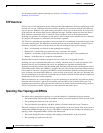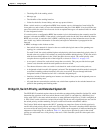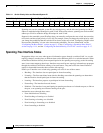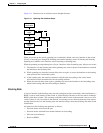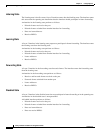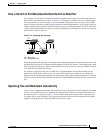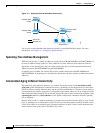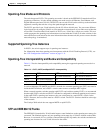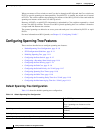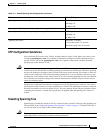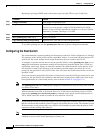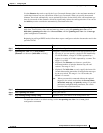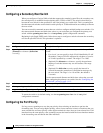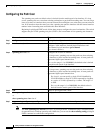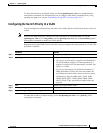
11-10
Catalyst 2940 Switch Software Configuration Guide
78-15507-02
Chapter 11 Configuring STP
Configuring Spanning-Tree Features
When you connect a Cisco switch to a non-Cisco device through an 802.1Q trunk, the Cisco switch uses
PVST+ to provide spanning-tree interoperability. If rapid PVST+ is enabled, the switch uses it instead
of PVST+. The switch combines the spanning-tree instance of the 802.1Q VLAN of the trunk with the
spanning-tree instance of the non-Cisco 802.1Q switch.
However, all PVST+ or rapid-PVST+ information is maintained by Cisco switches separated by a cloud
of non-Cisco 802.1Q switches. The non-Cisco 802.1Q cloud separating the Cisco switches is treated as
a single trunk link between the switches.
The external spanning-tree behavior on access ports and trunk ports is not affected by PVST+ or rapid
PVST+.
For more information on 802.1Q trunks, see Chapter 13, “Configuring VLANs.”
Configuring Spanning-Tree Features
These sections describe how to configure spanning-tree features:
• Default Spanning-Tree Configuration, page 11-10
• STP Configuration Guidelines, page 11-11
• Disabling Spanning Tree, page 11-11
• Configuring the Root Switch, page 11-12
• Configuring a Secondary Root Switch, page 11-14
• Configuring the Port Priority, page 11-14
• Configuring the Path Cost, page 11-16
• Configuring the Switch Priority of a VLAN, page 11-17
• Configuring Spanning-Tree Timers, page 11-18
• Configuring the Hello Time, page 11-18
• Configuring the Forwarding-Delay Time for a VLAN, page 11-19
• Configuring the Maximum-Aging Time for a VLAN, page 11-19
Default Spanning-Tree Configuration
Table 11-3 shows the default spanning-tree configuration.
Table 11-3 Default Spanning-Tree Configuration
Feature Default Setting
Enable state Enabled on VLAN 1.
UP to 4 spanning-tree instances can be
enabled.
Spanning-tree mode PVST+. (Rapid PVST+ and MSTP are
disabled.)
Switch priority 32768.
Spanning-tree port priority (configurable on a per-interface basis) 128.



